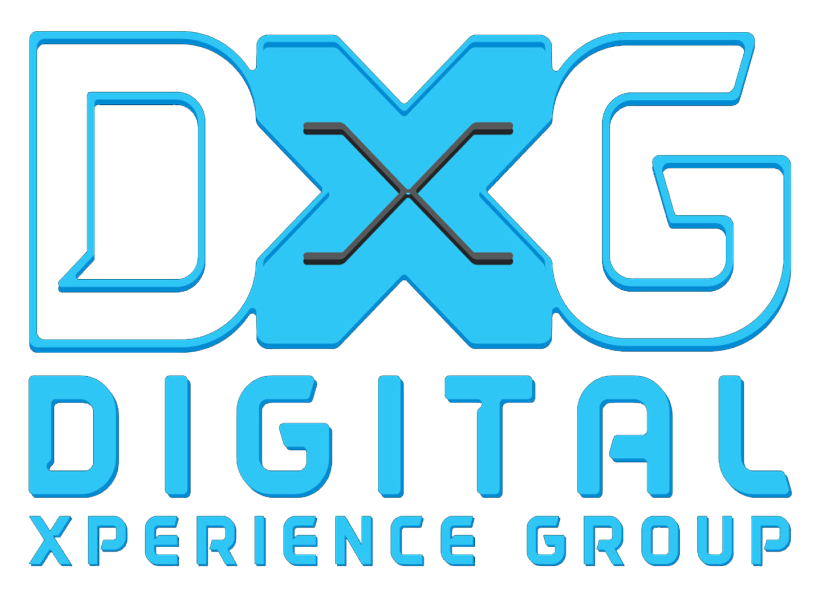

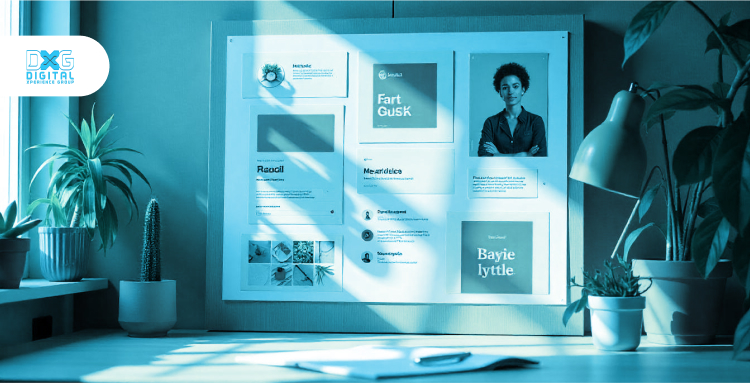
June 30, 2025
Have you ever attended an event where the branding was so perfect, it felt like an extension of the brand itself? Everything from the colors and fonts to the tone of the messages, everything just clicked. That’s the power of consistency, and it’s not just about looking good. It's about creating an experience that sticks with your audience long after the event ends.
If you’re hosting your event, every moment, every touchpoint, and every interaction should feel like a natural reflection of your brand. Sounds like a dream, right? How exactly do you customize your event platform to make this vision a reality? That’s what we’re about to explore—how you can transform any event platform into a true reflection of your brand.
Before you customize your event platform, you need to ground yourself in the why behind your brand. Strong branding isn’t just about having a good-looking logo, it’s about telling a cohesive story. That story lives in your voice, your visuals, and your values. When these elements align, your audience feels it. They trust you faster. They remember you longer.
Think about your brand’s tone. Are you bold and disruptive? Friendly and casual? Clean and corporate? The tone you use in your content should show up everywhere in your event platform, from registration pages to session titles. Pair that with consistent color palettes, typography, and imagery, and you’re already building a space that feels unmistakably like you.
And here’s why it matters:
68% of businesses acknowledge that brand consistency contributes between 10% and 20% of their revenue growth.
(Source: MediaPost)
That’s not fluff, that’s ROI. When your event platform reinforces the same brand identity people see on your website or social media, you’re creating a unified experience that builds trust and drives results.
So, before getting into tech features or platform settings, take a moment to revisit your brand’s core identity. It’s the compass that will guide every design and content choice you make next.
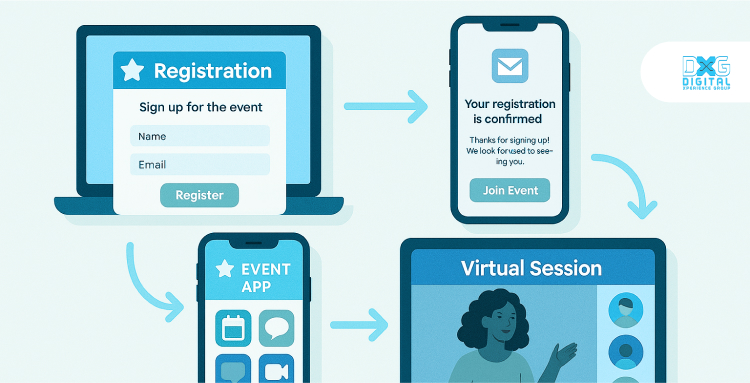
You can’t customize your event platform effectively if the platform itself doesn’t let you. That’s why the tools you choose matter just as much as the content you create. Think of your platform as the canvas, and your brand as the art. The right platform should give you the freedom to showcase that art without restrictions.
Look for platforms that go beyond basic logo uploads. You want full control over branding elements like colors, fonts, button styles, and layout. Even better? Platforms that offer white-label options, so your event doesn’t carry someone else’s branding. A custom domain is another must—it keeps the event experience rooted in your ecosystem, not someone else’s.
40% of developers report over an 80% adoption rate for event apps, highlighting the importance of platform flexibility.
(Source: Eventcube)
That tells you just how critical it is to choose a platform that supports your brand, not limits it. Whether you’re hosting a webinar, hybrid conference, or multi-day summit, your platform should adapt to you, not the other way around. If it doesn't, it’s probably not the right fit.
3) Design the Journey: Customizing Every Touchpoint
Every click is a chance to make an impression. From the moment someone registers to the final post-event email, your event platform should reflect your brand at every turn. That means more than swapping in your logo—it’s about customizing the full attendee journey so it feels intentional, cohesive, and unmistakably you.
Start with the registration page. Use your brand’s colors, fonts, and tone of voice to create a smooth, inviting experience. Keep it simple but consistent. Then move on to confirmation emails, don’t rely on a generic copy. Personalize the message, match your tone, and keep the design on-brand.
If your event includes an app or virtual venue, go even deeper. Customize the navigation, button styles, banners, and background imagery to reflect your identity. Make it feel like a branded experience, not a rented space.
If your event platform feels clunky, inconsistent, or off-brand, your audience will notice—and they might not come back. Consistency across the user flow builds trust. It shows your attendees that you’ve thought about the details. And that attention? It leaves a lasting impression.
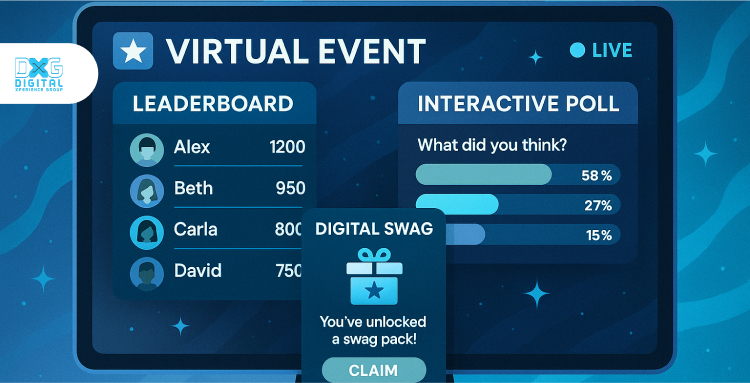
Branding your event platform goes beyond visuals, it’s also about how you sound. Every session title, call-to-action, agenda description, and sidebar menu is a chance to speak in your brand’s unique voice. When your content sounds like you, it reinforces trust, familiarity, and connection.
Start by aligning your session titles and calls to action (CTAs) with your brand tone. A playful brand like Slack might use CTAs like “Let’s Do This” or “Get the Scoop,” while a formal brand like Deloitte might lean toward “Learn More” or “Download Full Report.” One isn’t better than the other, but staying consistent matters.
Don’t overlook the microcopy, those small bits of text in buttons, tooltips, or loading screens. They may be tiny, but they carry big brand energy. A well-placed phrase in your voice can turn a routine interaction into a memorable moment.
70% of survey respondents reported that consistent branding is crucial when communicating with existing customers.
( Source: Marq )
Also, humanize your materials. Speaker bios don’t have to read like résumés. Use language that reflects your brand’s personality. If you’re warm and conversational, your bios, banners, and even error messages should sound the same.
Customizing your event platform this way helps attendees feel like they’re engaging with your brand, not just attending another online event. And when does the voice feel authentic? People listen longer and remember more.
Customizing your event platform isn't just about aesthetics—it's also about how people engage. Every interaction is an opportunity to leave a lasting impression, and the most memorable ones often come with a bit of fun. Whether it’s a virtual photo booth, a gamified leaderboard, or a live poll, your brand should show up in every interactive detail.
Think beyond giveaways. Branded gamification—like quizzes, scavenger hunts, or challenges gets people involved and reinforces your message. If you’re using polls or Q&A features, customize the language and design to reflect your tone and values. And don’t underestimate the power of digital swag, from downloadable wallpapers to exclusive content, even virtual gifts can carry your brand’s look and voice.
Build a Strong Event Planning Team for networking lounges or breakout areas with names that tie back to your brand story. If your platform allows it, use branded backgrounds, icons, and chat themes to make even casual conversations feel intentional.
So if you want your audience to not just show up, but remember you long after they log off, add moments of branded delight throughout the event. Because the more fun and on-brand the interaction, the deeper the connection.
Customizing your event platform gets a little more nuanced when sponsors enter the picture. You want to give them the spotlight they deserve after all, they’re helping you make the event happen, but not at the expense of your own brand identity. The key is balance: showcasing sponsors while keeping your visual hierarchy intact.
Start with placement. Use dedicated sponsor sections on your event homepage or virtual lobby, think scrolling carousels, tiered grids, or branded virtual booths. Incorporate sponsor logos into session titles or shout-outs tastefully, without overwhelming your own color scheme or typography.
A smart layout for Balancing Sponsor Visibility with Brand Control :
A sidebar banner featuring sponsor logos in monochrome to match your brand palette
Clearly labeled sponsor sessions that still use your event’s fonts and design framework
Sponsored networking rooms with customized signage that aligns with your visual style
The goal is to integrate, not compete. Avoid cluttered layouts or oversized logos that steal attention from your main message. Instead, give sponsors meaningful exposure in places where attendees are naturally engaged, like pre-roll videos, interactive polls, or gamified challenges.
This way, your sponsors feel valued, your audience isn’t overwhelmed, and your brand stays at the center of the experience. You don’t have to shrink your brand to make space, you just need to design with intention.
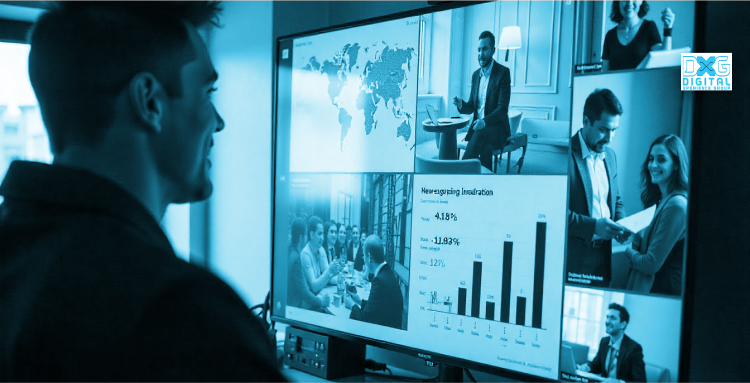
You’ve spent time customizing your event platform to reflect your brand beautifully; however, don’t hit launch just yet. Even the most polished event can unravel if you skip the final (and arguably most important) step: testing.
Think of it like a dress rehearsal. Walk through every part of the attendee experience, from the registration page to the final feedback form. Does the branding show up where it should? Do links work? Is your tone consistent throughout? These small details either build credibility or break it.
Build a QA checklist that covers:
Visuals (logo placement, colors, font consistency)
Content (tone, grammar, clarity)
Functionality (registration flows, video playback, networking tools)
Accessibility (alt text, mobile responsiveness, captions)
And don’t stop at checklists, stage a full mock event. Invite a small group from your team or trusted partners to run through the experience in real time. You’ll spot issues you’d never catch on a static preview.
Event professionals spend almost half of their time troubleshooting problems that could’ve been avoided with better prep. That’s valuable time you could be spending engaging with your audience or amplifying your brand.
The event may be over, but your brand’s impact shouldn’t fade with the last goodbye. Customizing your event platform doesn’t stop at launch; it carries into how you measure success. Now’s the time to ask: Did our brand truly resonate? Did we leave a lasting impression?
Go beyond general feedback forms. Include branding-specific questions that dig into how attendees experienced your identity:
Did the event feel cohesive and aligned with our brand?
Was our message clear throughout each session and interaction?
Which design or content elements stood out most?
These insights are gold when planning your next event. Then look into your data. Look at click-through rates on branded CTAs, engagement with visuals, downloads of branded assets, and participation in interactive features like polls or games. See where your brand connected and where it got lost in the noise. Must read: What Event Planners Need to Negotiate Before Signing a Hotel Contract.
Even social chatter can be revealing. Did attendees share screenshots, tag your event hashtag, or mention specific branded moments? That kind of organic engagement is proof that your brand is stuck.
Your event is more than a schedule of speakers and sessions, a powerful brand experience waiting to happen. When you customize your event platform with intention, you’re not just hosting an event. You’re telling your story, building trust, and creating moments people associate with you, not just the technology you used.
It takes brand impressions before people remember you. A fully branded event helps you make every single one of those impressions count—visually, emotionally, and experientially.
So let’s stop thinking of branding as a surface layer. It’s the experience itself. If you're ready to create a platform that reflects the power and polish of your brand, DXG is here to make it real. Let’s build your next unforgettable event together.